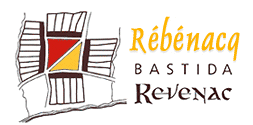Nature in Rebenacq
The Néez which flows through Rébénacq is fed from a mountain stream, the “gave d’Ossau”. The banks are ideal for picnics and enjoyable walks, as well as offering perfect fishing spots.
The clear waters encourage the presence of several animal species and notably the dipper (Cinclus cinclus): the size of a blackbird, it catches its food under water and never leaves the banks and with its white breast it is easy to recognise.
The grey wagtail is a part-time visitor, present in spring and in the autumn.
The virgin calopteryx is often present in the small streams which flow into the Néez.
The Rébénacq story in a few words
Our village is a 13th century market town. In south-west France these are called ‘bastides’, many of which were created as a means of increasing agricultural production. The ‘bastides’ normally have a large central square. The houses were built side by side, all with the same dimensions, with a garden. Each family had to pay the same amount of tax to the Viscount of Bearn, Gaston Fébus, a system similar to today.
Note that the church is not situated on the square which must be left free for the market. Rébénacq was founded on June 25th, 1347, in an uncultivated area which was criss-crossed by transhumance paths for cows and sheep as they migrated from mountains to the plains each year.
Some houses, parts at least, are from the 17th century. Note the asymmetric positioning of doors and windows. Some of the smaller houses are of medieval style and, evolving from earlier periods, a new style was introduced in the 19th century.
